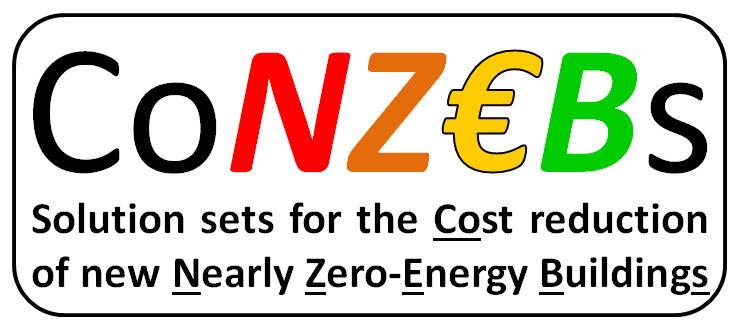The CoNZEBs project team has identified technical solution sets for nearly-zero-energy buildings (NZEBs) that lead to lower investment costs than the mainstream NZEB energy concepts and has published them in a report. In a second step these solution sets and an energy concept for a building beyond NZEB (net zero energy house respectively plus energy house) were assessed regarding life-cycle costs and life-cycle impact (primary energy and global warming potential including the product and the use stage, presented in another report).
Additionally CoNZEBs work has been spent on identifying parameters that have an impact on the cost and energy results of the solution sets, but will change over the next years and therefore lead to different results in 2030. The project team considers the following parameters as important in order to find out which solution sets are "future-proof":
- Primary energy factors
- Energy prices
- Technology costs
- Technology efficiencies
- Assessment methods for the energy performance of buildings
- Climate change
- Financial support programmes
For all parameters information has been gathered for 2030 based on available national or international studies or assessments by the national partners. The data and the corresponding sources are presented in the first half of the report. The second half of the report contains recalculations of the energy performance and cost results for the solution sets, this time with the data for 2030. The report presents the data for 2018 next to the data for 2030 so that the impact of all changes is clearly visible. Based on the calculations there are two conclusions valid for all four countries:
- The building energy performance level beyond NZEB becomes financially more attractive when taking the changes at the impact factors in 2030 into account. Payback times for the additional investment costs in comparison to the typical NZEB get smaller, due to comparably lower technology costs for mainly heat pumps and PV systems and still rising technology efficiencies.
- Alternative NZEB solution sets with electrical heat pumps or (where allowed) direct electrical heating systems, both in combination with PV arrays, benefit from the changes at the considered impact parameters in the year 2030 if compared to the typical NZEB solutions.
Read more about the detailed calculation results and the national summaries and conclusions in the report "Solution sets for NZEB multi-family houses and beyond assessed for 2030".
Figure: Title page of the CoNZEBs report "Solution sets for NZEB multi-family houses and beyond assessed for 2030". © CoNZEBs.
Due to future developments in the energy generation sector, in the building service technologies and changes in the investment and energy costs different solution sets can become cost-efficient in the coming years. Changes in the energy balancing methods – e.g. energy performance certificates for city quarters – can allow for different solutions to fulfil minimum energy performance requirements or to achieve the NZEB level and beyond. CoNZEBs is analysing the possible developments and their influence on solution sets.
The results will be documented in a public report “Solution sets for NZEB multi-family houses and beyond NZEB for 2030”.

